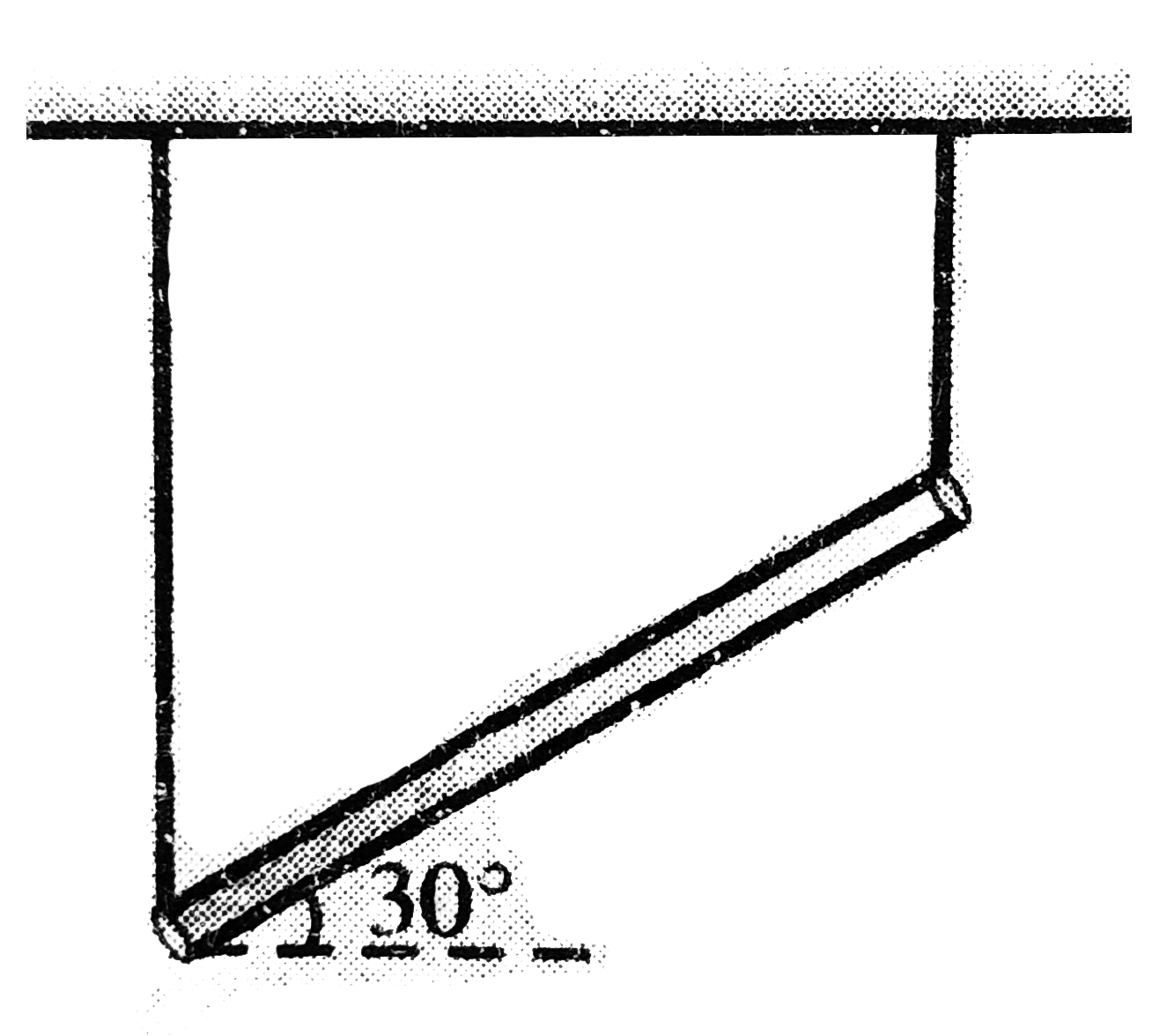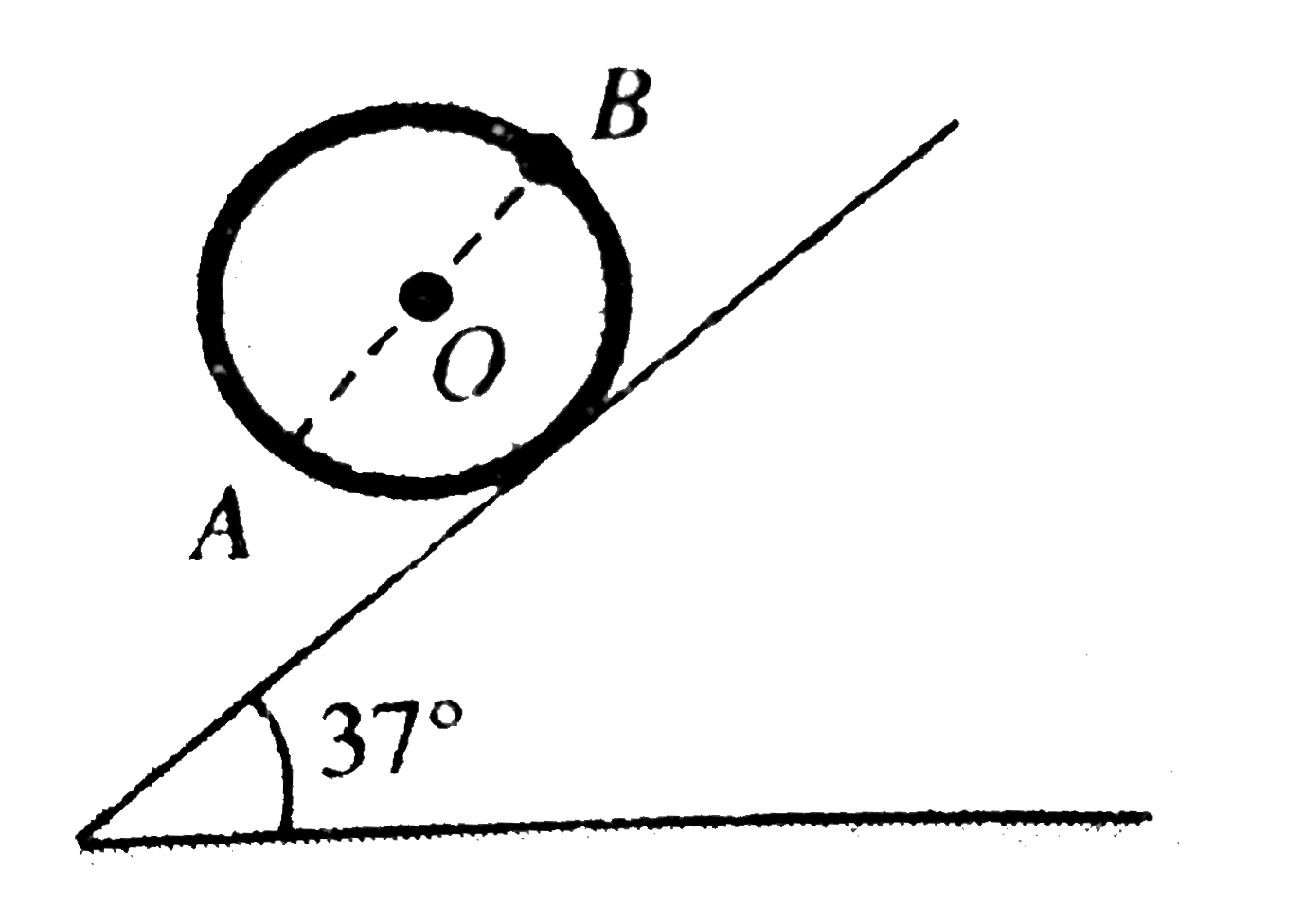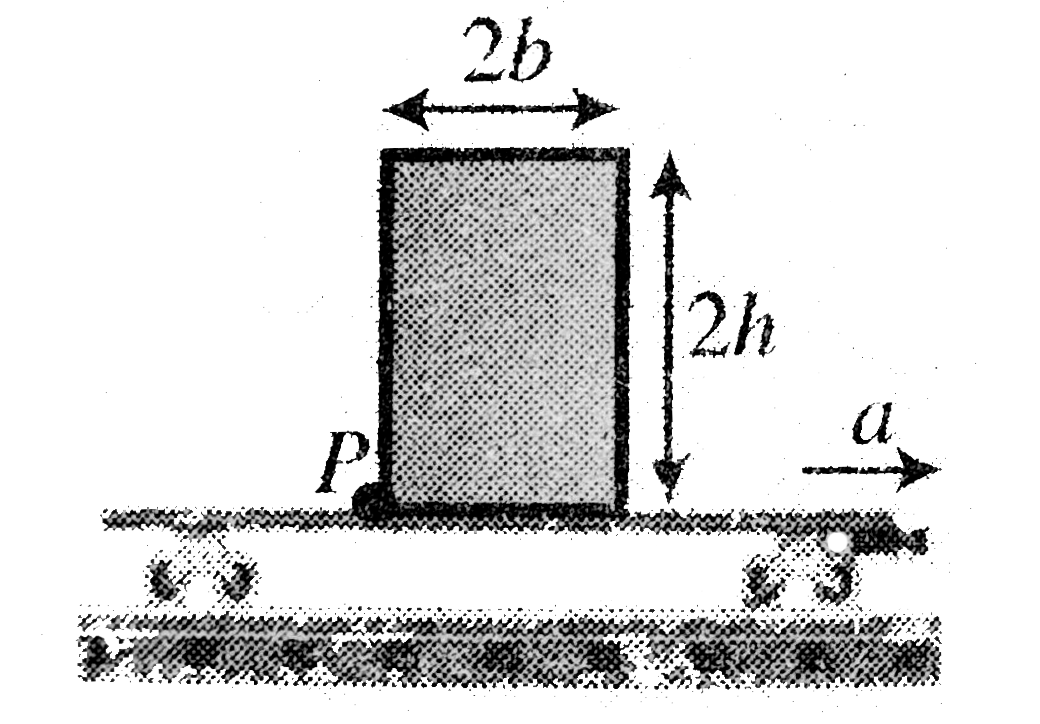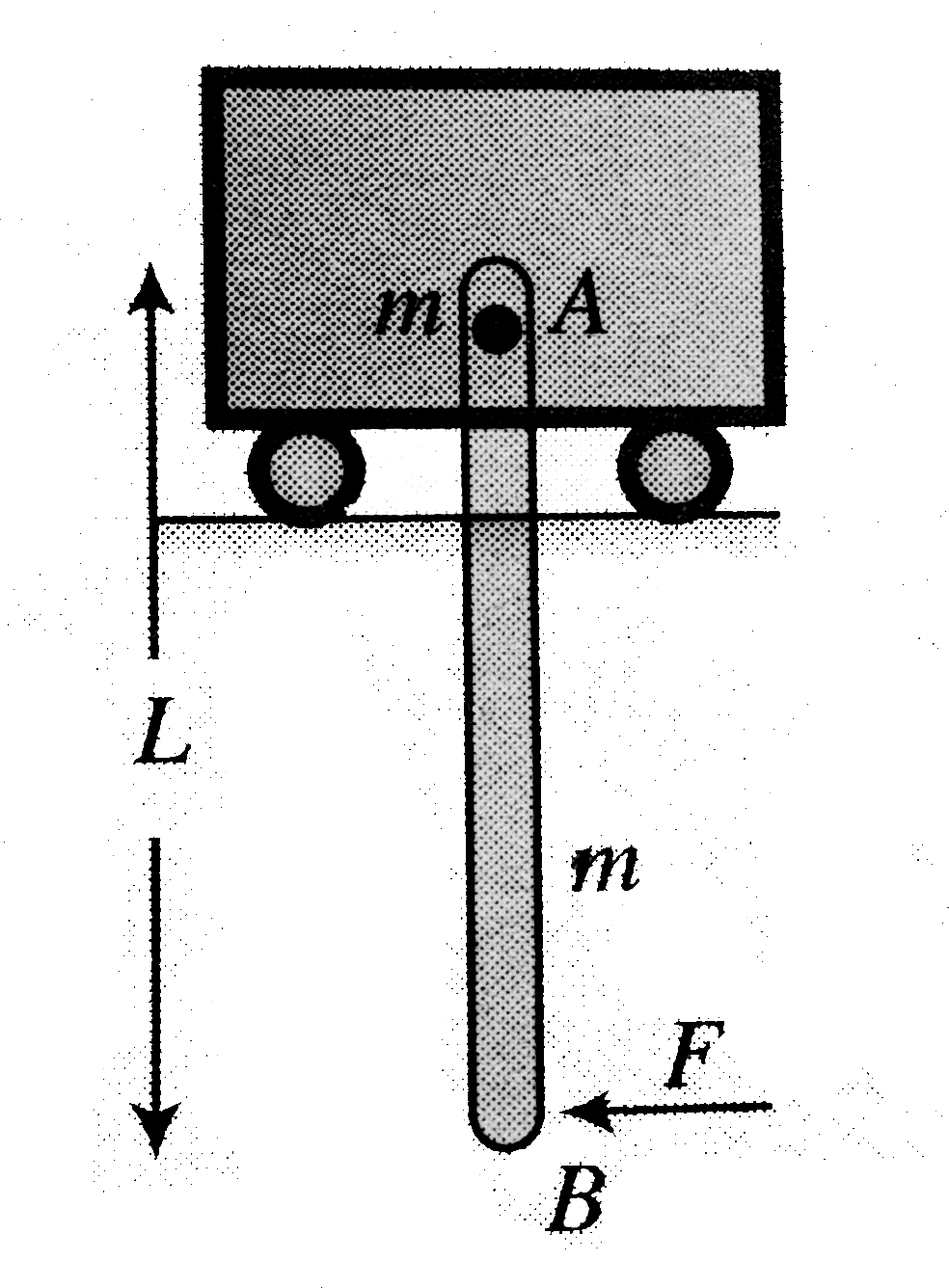Complete Solutions to Solved Examples of chapter RIGID BODY DYNAMICS 1 of Class 11 book with complete answers and questions
| Class 11 | PHYSICS |
| Chapter | RIGID BODY DYNAMICS 1 |
| CENGAGE PHYSICS | Solved Examples |
| Number Of Questions | 9 |
| Academic Year | 2023-24 |
A uniform cylinder of radius `r` and mass `m` can rotate freely about a fixed horizontal axis. A thin cord of length l and mass `m_(0)` is would on the cylinder in a single layer. Find the angular acceleration of the cylinder as a function of the length `x` of the hanging part of the end. the wound part of the cord is supposed to have its centre of gravity on the cylinder axis is shown in figure.
 05:34View Solution
05:34View SolutionA thin uniform bar of mass `m` and length `2L` is held at an angle `30^@` with the horizontal by means of two vertical inextensible strings, at each end as shown in figure. If the string at the right end breaks, leaving the bar to swing, determine the tension in the string at the left end and the angular acceleration of the bar immediately after string breaks.
 05:09View Solution
05:09View SolutionA uniform solid sphere of mass `1 kg` and radius 10 cm is kept stationary on a rough inclined plane by fixing a highly dense particle at `B`. Incination of plane is `37^@` with horizontal and `AB` is the diameter of the sphere which is parallel to the plane, as show in figure. Calculate

a. mass of the particle fixed at `B`
b. minimum required coefficient of friction between sphere and plane to keep sphere in equilibrium.05:09View SolutionA block of mass `m` height `2h` and width `2b` rests on a flat car which moves horizontally with constant acceleration a as shown in figure. Determine

a. the value of the acceleration at which slipping of the block on the car starts, if the coefficient of friction is `mu`.
b. the value of the acceleration at which block topples about `A`, assuming sufficient friction to prevet slipping and
c. the shortest distance in which it can be stopped from a speed of `20 ms^(-1)` with constant deceleration so that the block is not disturbed. The following data are given `b=0.6 m, h=0.9m, mu=0.5` and `g=10ms^(-2)`05:34View SolutionA uniform slender bar `AB` of mass `m` is suspended as shown from a small cart of the same mass `m`. Neglecting the effect of the friction, determine the accelerations of points `A` and `B` immediately after a horizontal force `F` has been applied at `B`.
 07:26View Solution
07:26View SolutionOne fourth length of a uniform rod of length `2l` and mass `m` is place don a horizontal table and the rod is held horizontal. The rod is released from rest. Find the normal reaction on the rod as soon as the rod is released.
 05:50View Solution
05:50View SolutionDetermine the minimum coefficient of friction between a thin rod and a floor at which a person can slowly lift the rod from the floor, without slipping, to the vertical position applying at its end a force always perpendicular to its length.
05:10View SolutionConsider two heavy right circular rollers of the radii `R` and `r` respectively and rest on a rough horizontal plane a shown in figure. The larger roller has a string wound around it to which a horizontal force `P` can be applied as shown. Assuming that the coefficient of friction `m` has the same value for all surfaces of contact, determine the necessary condition under which the larger roller can be pulled over the smaller one. Assume the smaller cylinder should neither roll nor slide.
 08:06View Solution
08:06View SolutionIn the system shown in the figure blocks `A` and `B` have mass `m_(1)=2 kg` and `m_(2)=26//7 kg` respectiely. Pulley having moment of inertia `I=0.11kgm^(-2)` can rotate without friction about a fixed axis. Inner and outer radii of pulley are `a=10 cm` and `b=15 cm` respectively. `B` is hanging with the thread wrapped around the pulley, while `A` lies on a rough inclined plane.
Coefficient of friction being `mu=sqrt(3)//10`
Calculate
as. Tension in each thread, and
b. Acceleration of each block `(g=10 ms^(-2))`
 07:02View Solution
07:02View Solution
Solved Examples questions and complete solutions for chapter RIGID BODY DYNAMICS 1 of CENGAGE PHYSICS (ENGLISH) of Class 11
